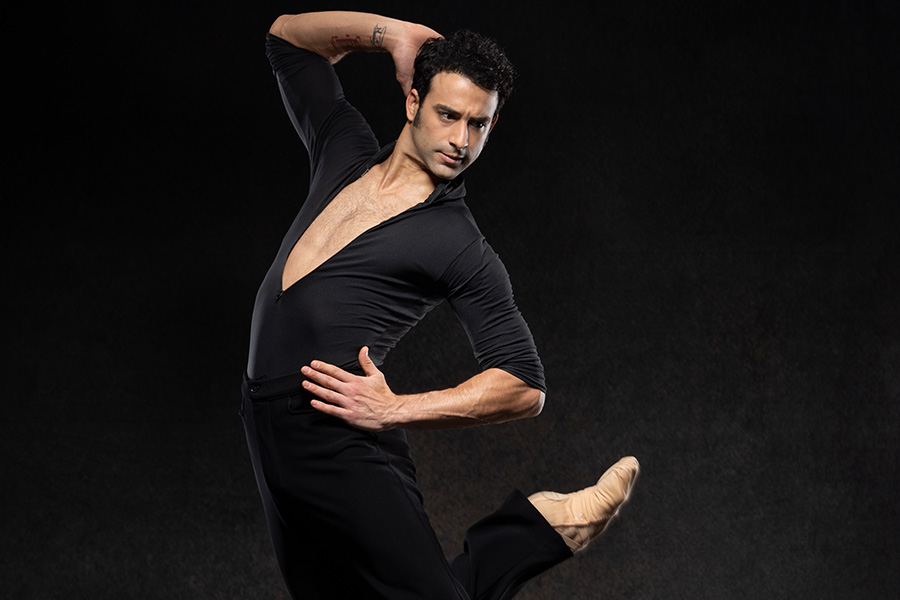The World Premiere of Carmen in Philly Fuses Ballet with Spanish Dance and Thrilling Spectacle

Photo Credit: Alexander Iziliaev
When most people think of ballet, their first thoughts might involve something like elegance, grace, poise, and a kind of airy romanticism. But while beauty and refinement are core to its appeal, ballet’s reach extends far beyond swans, fairies, and even our beloved Tchaikovsky.
That’s what’s so thrilling about Philadelphia Ballet’s upcoming, original ballet production of Carmen, with music adapted from Georges Bizet’s 1845 opera of the same name. Carmen is a story of dynamic drama and sexuality, and it has been a global favorite for generations. The performance will be a groundbreaking fusion of flamenco-inflected dance and rhythms combined with Classical music and dramatic themes. It’s an important demonstration of ballet’s ability to reach across cultures, genres and traditions, and for Spanish-born artistic director Angel Corella, it will be a high point in his career with Philadelphia Ballet.
“This production requires the perfect storm–great artistry, great acting and great dancing,” Corella says, noting that he and his team feel prepared to pull it off. “And now is the right time for the company to do it.”
The production is one-of-a-kind in both Philadelphia and in the U.S., and for Corella and his music director, Beatrice Jona Affron, it’s the result of months of work to bring together a masterpiece.

Credit: Alexander Iziliaev
The Music
The tale of Carmen comes from a 19th-century French novella by Prosper Mérimée set in Spain. The story achieved widespread fame through its adaptation as an opera by Bizet, an influential French composer. Affron describes Carmen, which was controversial in its day but became known as Bizet’s greatest work after his death, as a series of “greatest hits,” which offers up melodies that are still regularly used in ballet, film–even to undergird Olympic figure-skating and gymnastics performances.
Affron and Corella have preserved that strong musical foundation for their ballet–most of the music comes from Bizet’s opera (it’s filled with dances and lends itself well to adaptation), and when they needed additional music, Affron drew from Bizet’s catalog to keep the feel consistent.
That launching point allowed them to embrace the Spanish side of the opera. Corella is the first Spanish-born artistic director to bring an original production of Carmen to the stage in the U.S. Corella’s version of Carmen will borrow from flamenco, and dancers will use their bodies (through everything from claps to banging on tables) to add to the rhythm, in the style of traditional Spanish folk music.
Audiences will feel that the production comes from a singular vision. What’s particularly amazing about Affron and Corella’s approach is that all their planning is done long before the dancers enter the picture. Corella, Affron, and principal pianist, Martha Koeneman, worked together months ago to determine the musical choices.
According to Affron, the music serves as the glue that holds everything together. The numbers are selected to match and heighten the drama and choreography playing out in Corella’s head, which ranges from seductive to tragic, but Affron also wants the score to entertain on its own accord.
“I don’t feel restricted by the dance and choreographic requirements–on the contrary, it’s really my job to figure out how to combine those with my understanding and make a musical product that I think would be worthy of a concert,” she says.

Credit: Alexander Iziliaev
The Performance
The drama of the story is finally put into action by the movement of the dancers, who need the instincts of actors, according to Corella. He had been wanting to do Carmen for years, but had waited until his team was ready to bring all the different aspects together.
“I wanted to be more mature as a stager and choreographer, and also to wait until the company was more mature,” he says. His goal with Carmen is to capture the deeper psychological underpinnings of the tale of lust and tragedy. Of course, that means conveying the full impact of what was once a literary tale, all without words.
“The hardest part is conveying the full narrative while just using our bodies to tell the story,” Corella says. Bringing the full expressiveness of Spanish dance to match the French musical influences heightens the significance of the story.
Costuming also supports that expression, particularly the personality of the characters– Corella spent the summer working with a Spanish seamstress to match his interpretation. Carmen’s dress, for example, has been crafted to remind viewers of a giant red rose.
“She’s exuberant and wants to be seen and attract the eyes of everyone–and the dress helps us establish that aspect of her character upfront,” Corella says.
These efforts come together to create an original work that requires a degree of sophistication from its audience, but also brings a new level of drama to ballet in Philadelphia, ranging from romantic duets to the death of its eponymous character. It’s not necessarily a ballet to bring your kids to, but it’s one that offers beautiful dancing, costumes and music to support an exciting tale of love and jealousy, and which contains a kernel of insight.
“It’s a great chance to bring a date to the theater,” says Corella. “It will be a romantic night–but it will also show them how not to behave in a relationship.”
This is a paid partnership between Philadelphia Ballet and Philadelphia Magazine